No products in the cart.: $0.00
Fungal Acne 13 Effective and Safe Home Remedies

Noticing more facial blemishes than usual? Or little bumps on your face and body that just won’t go away? You might have fallen prey to a particular type of skin condition – fungal acne. While this may sound intimidating, it is both normal and treatable.
What is fungal acne?
Fungal acne is not really acne (blockage of the pores by sebum and bacteria and with inflammation). Fungal acne is actually a fungal infection of the hair follicle by malassezia (used to be called pityrosporum) that looks like regular acne (acne vulgaris). While often mistaken for regular acne, the cause is different.
Sebaceous or “oil” glands naturally keep our skin protected against friction and make the skin more impervious to moisture. Acne happens when your pores (Hair follicles) are blocked with dead skin cells, sebum(oil) and then can become pustules and/or have inflammation.
In contrast, fungal acne (fungal folliculitis) is an overgrowth of yeast within the hair follicles. When there is yeast in the sebaceous glands, your hair follicles become inflamed, causing “fungal acne.” Let’s explore what that can look like.
What does fungal acne look like?
Fungal acne can be often confused with a typical whitehead or acne papule. The lesions are usually grouped together with white bumps or pustules or red bumps (papules) of very similar size from 1-2mm.
Fungal acne (Malassezia folliculitis) can happen anywhere on the body but most commonly appears on the forehead, temples, hairline, upper chest, and mid-back.
Versus regular acne which comes in a variety of forms and sizes from: papules, pustules, blackheads, whiteheads, nodules (big painful bumps), cysts.
The bumps can get worse with:
- Very greasy skin
- Sweat
- Over-moisturizing, using too much sunblock, make-up which blocks your pores
being in a humid climate can increase your likelihood of developing fungal acne, because yeast thrives in this type of environment. - Tight fitting clothes with sweat, blocking the pores, increasing fungus growth
- Using antibiotics which kills bacteria but sometimes can result in fungus growing
Fungal Acne Vs. Regular Acne
Although regular acne and fungal acne have some similarities, there are several ways you can try to tell them apart.
How fungal acne feels vs. regular acne
Fungal acne: itching and burning
Regular acne: neutral to varying degrees of discomfort. Cysts can be very painful, large and scarring.
How fungal acne looks vs. regular acne
Fungal acne: white bumps with red skin surrounding them; bumps are uniform in size and usually occur in clusters.
Regular acne: varying appearances and sizes with any combination of whiteheads, blackheads, skin-colored bumps or cysts depending on the person; blemishes are more spaced out.
Where fungal acne is located vs regular acne
Fungal acne: can happen anywhere on the body but most commonly appears on the forehead, temples, hairline, upper chest, and mid back.
Regular acne: anywhere on your face (forehead, nose, cheeks, chin, jawlin, hairline, temples), neck, chest, or back
What causes fungal acne vs regular acne
Fungal Acne: fungus. Specifically Malassezia (used to be called Pityrosporum). (yeast)
Regular Acne: bacteria
How fungal acne is treated vs. regular acne
Fungal acne: You can try: bentonite clay masks, chemical exfoliants (lactic/salicylic acid), dandruff body wash, natural antifungals (oil of oregano, clove, walnut), more frequent showering, and looser clothes. What doctors will prescribe to treat your fungal acne aka fungal folliculities: antifungal creams or medications.
Regular acne: treatment of hormonal imbalances with birth control pill, patch, or vaginal ring, salicylic acid, topical retinoids, topical antibiotics, oral antibiotics, and/or oral retinoids.
What causes fungal acne on your face?
Fungal acne appears on your face due to yeast overgrowth, which may be due to trapped moisture, more moisture, a suppressed immune system, tight clothes, or humid environments. While having some fungus and bacteria on your skin is normal, an imbalance can lead to an overgrowth of yeast. Yeast can then enter into the sebaceous glands via the hair follicle and cause the inflammation and itchiness that comes with fungal acne.
How is fungal acne diagnosed?
Before treating fungal acne, consult a doctor to make sure that you do not have another skin condition. Even if fungal acne is suspected, a doctor or dermatologist may want to conduct a fungal test (skin scraping and look under the microscope) to diagnose fungal acne aka fungal folliculitis other causes before prescribing treatment.
Although you may want to jump into treatment as soon as possible, consulting a doctor is always best. Misdiagnosing your fungal acne could lead to ineffective treatment. For instance, if you start oral antibiotics to treat your fungal “acne,” if it turns out you have fungal acne due to a disruption of normal bacteria, the antibiotics could make your fungal acne worse.
-
Product on sale
 Admire My Skin$69.00
Admire My Skin$69.00 -
Product on sale
 DR. MADH SKIN SOLUTIONS AMMA ELIXIR$110.00
DR. MADH SKIN SOLUTIONS AMMA ELIXIR$110.00 -
Product on sale
 FRIGG ATTUNING FACE POTION$60.00
FRIGG ATTUNING FACE POTION$60.00 -
Product on sale
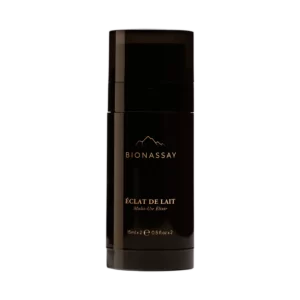 ÉCLAT DE LAIT Age-Preserving & Nourishing Serum$126.00
ÉCLAT DE LAIT Age-Preserving & Nourishing Serum$126.00 -
Product on sale
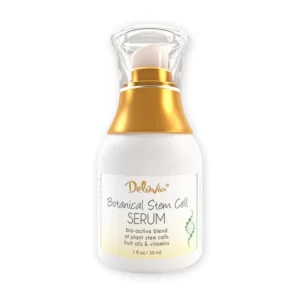 BOTANICAL STEM CELL SERUM$48.00
BOTANICAL STEM CELL SERUM$48.00 -
Product on sale
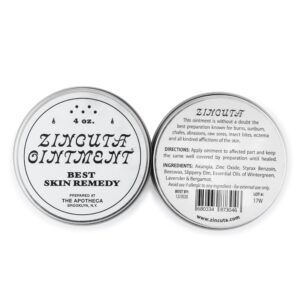 Zincuta Ointment$12.50
Zincuta Ointment$12.50 -
Product on sale
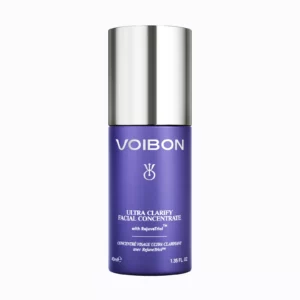 BONEFFIC | ULTRA CLARIFY FACIAL CONCENTRATE$79.00
BONEFFIC | ULTRA CLARIFY FACIAL CONCENTRATE$79.00 -
Product on sale
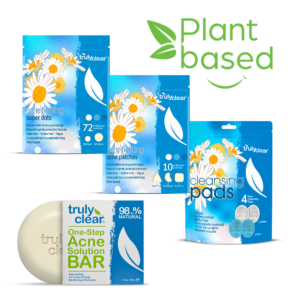 Truly Clear Ultimate Bundle$90.00
Truly Clear Ultimate Bundle$90.00
How to Get Rid of fungal acne?

Consulting a dermatologist is important if you assume you have fungal acne. Some of the treatment possibilities he may guide are:
Medical Treatments:
Since fungal acne is primarily a fungus overgrowth inside the hair’s follicles, oral antifungal medications like Fluconazole and Ketoconazole can be prescribed depending on the hardness of the condition. The drugs can enter deep into the follicle and prevent the fungus from developing further.
OTC Or Creams:
OTC treatments normally involve antifungal shampoos that carry sulfur. You can also apply antibacterial shampoos. They want to be used on the scalp, soaped and left on for a few minutes before being washed off. Seldom, oral antifungal treatments are prescribed simultaneously with local ointments.
Home Remedies:
Lactobacillus creates lactic acid, which can manage the production of the fungus. So, have more yogurt in your intake, and you can also use lactobacillus supplements. Honey has antimicrobial properties. Utilize it to the affected area and hold it on for as lasting as you can, even for a few hours if practicable. Tea tree oil is an antimicrobial that can be used. Dilute it with water and implement only on the acne as it can burn the skin if used all over.
Natural home remedies for fungal acne:
Eat Yogurt and Probiotics
Yogurt and other probiotics have a sufficient amount of healthy bacteria that help stave off many fungal germs. These fight off microorganisms that let these infections.
Fermented foods are another wonderful cause of probiotics. If these are not improving, you could do probiotic continuations with more intensive good bacteria dosages. Read more further on the health advantages of yogurt.
Wash with Soap and Water
Wash the affected region with soap and water doubly daily before applying any home remedies or any additional medication. This will manage the spread of infection.
Use Apple Cider Vinegar
Apple cider vinegar has antifungal qualities. You could combine three tablespoons in hot water and take it up or wet a cotton ball in it and touch it over your skin. Doing this threefold a day should produce helpful results. Read more further about the health advantages of apple cider vinegar.
Use Tea Tree Oil
Tea tree oil is typically antifungal and antibacterial. Stir it with any carrier oil like coconut oil or olive oil and pat over the infected region three to four moments a day. This is one of the most efficient home remedies to treat fungal acne.
Use Coconut Oil
In its unheated structure, even coconut oil operates as a powerful antifungal agent. Applying it up the skin presents a good, safe, modern medicine. Since it is soft on the skin, it is also helpful to heal scalp ringworm. Use across the skin three times a day.
Turmeric Use
Turmeric is a powerful antimicrobial and anti-inflammatory flavoring. Combine with limited water and utilize the infected region. To get advantages in the interior body conditions, mix with hot water or turmeric tea.
Use Aloe Vera
One of the usual time-tested straightforward remedies to heal any skin infection is aloe vera. It not only handles the infection but also calms and restores skin damage. Also, study aloe vera advantages for face and skin.
Garlic
Garlic is one of the usual strong antifungal and antimicrobial herbs. Those who consume garlic usually are less sensitive to fungal acne. Mash a few garlic with some olive oil and create a paste. Appeal to the infected region for approximately thirty minutes. Also, understand the advantages of garlic for health.
Oregano Oil
Another useful antifungal means is oregano oil. Mix a few droplets with any carrier oil and pat on the affected region. You could also use oregano oil tablets orally.
Follow these remedies daily to obtain the wanted results. Check for allergies to necessary oils before applying them.
Neem Leaves:
Neem leaves have powerful antifungal qualities and are remarkably useful for the skin. Cleaning the infected region with neem water benefits in treating fungal acne. To get neem water, heat neem leaves in water for 3 to 4 minutes.
Consuming foods rich in Vitamin C:
Vitamin C (Ascorbic acid ) promotes our immune system. It defends our body from numerous infections. A healthy immune system also accommodates fungal acne faster.
Baking Soda:
Baking soda is helpful in fungal acne-like athlete Foot. Utilizing baking soda powder on feet and under shoes accommodates to absorb moisture and wetness. It, therefore, stops the germs from spreading.
Hydrogen Peroxide:
Hydrogen Peroxide helps to heal athlete Foot. Soaking our feet in a solvent using the same water and hydrogen peroxide completely kills the fungus creating athletes’ feet.





